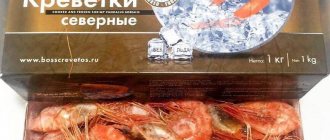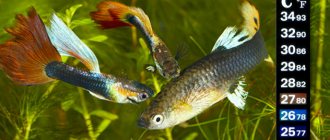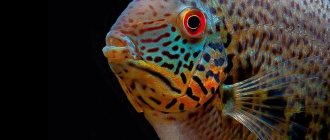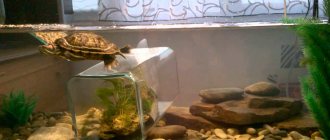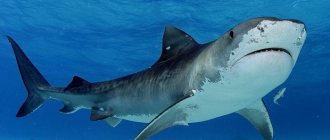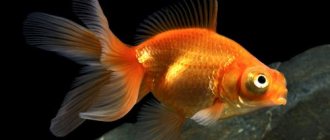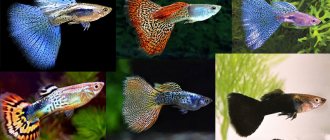home
Useful articles
Just about Far Eastern shrimp: which is the most delicious?
22.10.2020 We talk about Far Eastern shrimp from the buyer’s point of view
.
What types are there, how do they taste different and what is worth trying first. Firstly, shrimp can be wild
, caught in the sea and ocean, and
aquaculture
- these are bred in special farm ponds on a specially selected diet.
All Far Eastern shrimp are wild cold-water
, that is, species that live in the cold northern seas and are considered the most environmentally friendly and tasty.
caught in the natural environment are
, of course, much
healthier and tastier than
their counterparts from warm-water captivity.
Wild shrimp fatten their meat in natural conditions, eating natural products, and therefore they contain more vitamins. By the way, it is precisely because of the meager diet of wild shrimp that the “vein” (aka stomach), as a rule, does not require removal, since, unlike its aquaculture counterparts, it does not feed so abundantly.
On the side of the latter is
size
; on a farm in Thailand, a shrimp
can grow up to
400 grams
in a year , while a wild Far Eastern shrimp takes as many as
4 years
to gain
ten times less
weight.
On the left is a wild northern shrimp, on the right is an aquaculture Vannamei shrimp.
Secondly, according to the method of processing, shrimp can be already cooked,
boiled-frozen
, which is boiled directly on the ship in sea water, and
raw frozen
, which are frozen fresh.
Boiled-frozen shrimp is a ready-to-eat product
that just needs to
be defrosted correctly
(in the refrigerator, gradually, and under no circumstances
thrown into boiling water
) - and can be eaten or added to different dishes.
Raw frozen shrimp is a much more complex, delicate seafood product, often intended for connoisseurs
.
After all, freshly frozen shrimp, after gradual defrosting, can be used to prepare the most proper and delicious sashimi, sushi
and other traditional Japanese seafood dishes
without heat treatment
.
Only raw-frozen shrimp can be baked on the grill
: boiled-frozen ones have already been cooked and from repeated heat treatment they will simply dry out and become like unappetizing rubber.
Botan is the largest Russian shrimp and a recognized delicacy.
But raw frozen shrimp require more gentle handling.
So, if boiled frozen shrimp are simply covered with a thin layer of glaze
to prevent moisture loss, then raw frozen shrimp must be packed in
a vacuum bag
, otherwise drying can have a detrimental effect on the consistency of their meat and taste.
By the way,
the cold-water fresh-frozen shrimp “Botan Ebi” and “Ama Ebi” differ from the
warm-water ones
not
in blue-green
, but in the rich
reddish
or pink
color of the shell
due to the peculiarities of their habitat and nutrition in the northern seas
What is shrimp?
This is a small mollusk, part of the Crustacean family.
Class – Higher crayfish. They are close relatives of crayfish, but have a more modest size in contrast to them. Due to their close relationship and great similarity in description, they are often called crustaceans. How do you prefer to cook shrimp?
- Fry in a pan 51%, 1488 votes
1488 votes 51%1488 votes - 51% of all votes
- Boil 40%, 1159 votes
1159 votes 40%
1159 votes - 40% of all votes
- Cook on the grill 8%, 234 votes
234 votes 8%
234 votes - 8% of all votes
- Bake 2%, 46 votes
46 votes 2%
46 votes - 2% of all votes
Total votes: 2927
19.05.2020
- Fry in a pan 51%, 1488 votes
1488 votes 51%1488 votes - 51% of all votes
- Boil 40%, 1159 votes
1159 votes 40%
1159 votes - 40% of all votes
- Cook on the grill 8%, 234 votes
234 votes 8%
234 votes - 8% of all votes
- Bake 2%, 46 votes
46 votes 2%
46 votes - 2% of all votes
Total votes: 2927
19.05.2020
×
You or from your IP have already voted.
To the question of whether a shrimp is a fish or not, scientific sources answer in the negative, since the creature is a mollusk. But it is also recognized as a valuable dietary food product that has great benefits for the body.
Natural enemies
A large number of shrimp die in the larval stage. Arthropods are the favorite food of whale sharks, whales, and other planktivores. Shellfish, seabirds, fish, and some mammals also eat shrimp.
She is completely unarmed. The only way to escape from the enemy is to escape; she can hide in a thicket of algae.
Another feature is the possibility of camouflage. The shrimp imitate the color of the bottom and adapt the color of quinine to its surroundings. Animals are caught on an industrial scale. Producers extract from 2 to 3 million tons of arthropods annually.
Appearance
This crustacean has a peculiar structure. Its main feature is the ability to renew its shell. Despite the fact that the limbs of the shrimp are partially damaged along with the old shell, they are restored over time. This process occurs especially quickly in young individuals.
The genitourinary organs and digestive system, the heart are located in the head zone of the crustacean. Under the strong shell there are gills, with the help of which the shrimp breathes in the water. The head and chest merge into a single whole. There are small paws on the abdomen, head and chest. The crustacean has 10 of them. They are constantly on the move. They move sharply and very quickly.
The mollusk has thin, sensitive antennae with which it finds food.
On the body of the crustacean there are special small processes to which the organs of vision are attached, rotating around their axis. Shrimp blood is blue, but when there is a lack of oxygen, it becomes discolored.
The lifespan of these representatives of the Crustacean family varies from 1.5 to 6 years, depending on the habitat.
Shrimp are capable of changing sex from male to female at an early age if this is necessary for the continuation of the species.
Shrimp can live in a variety of bodies of water. They mainly live in seas, lakes, oceans, and less often in rivers.
Bottom line
Whatever type of shrimp you choose for yourself, remember a few simple rules that will help you and make the life of your pets easier:
- Copper is contraindicated for any type of shrimp. Be careful, because it is contained in many medicines for fish.
- Any arthropod (and fish will be grateful) must live in a clean environment, so think about the issue of filtration and water changes in advance.
- The presence of plants in the aquarium is mandatory. It is better if these are mosses and small-leaved ones for small species and larger ones for large-sized arthropods.
- If you are planning to do breeding, theoretically the crossing is possible as follows: Caridina + Caridina, Macrobrachium + Macrobrachium, Neocaridina + Neocaridina, etc. Shrimp belonging to different families not only do not interbreed, but can also conflict when kept together. However, one should not conclude that any species can be crossed within one family. The issue of shrimp reproduction is delicate and individual, but if you decide to start breeding these animals, you will not regret it.
The world of aquarium shrimp is more than diverse and everyone can find a shrimp to suit their taste.
What do they eat?
In their natural environment, crustaceans feed on the remains of organisms that have fallen to the bottom of the reservoir, silt, and parts of rotting plants. Large individuals can prey on small sick fish.
They search for food with the help of their antennae, which are the organ of smell. By rotating them in different directions, the mollusk smells food. Some individuals tear up the ground to find some kind of vegetation, others simply run along the sand in search of food.
In aquariums they are fed special food with a composition suitable for them. Regular vegetables are also suitable for crustaceans.
Preparation
The shrimp is small, large in size, bright pink and earthy brown in color, soft, buttery, sweet and elastic, crispy and almost tasteless.
Shrimp can be boiled, fried and grilled. There are many recipes that include shrimp meat.
Before cooking, shrimp can be marinated by mixing olive oil, garlic and various spices such as oregano, thyme, Italian spice mix, pepper, lemon juice and minced garlic.
Defrost shrimp at room temperature without heating. This way, nutrients are not destroyed and the structure of the shrimp remains intact.
Arthropods are usually fried in hot oil.
The largest species
There are many voluminous shrimp, some of them live in nature, while others are bred artificially. Below is a description of large species of these creatures.
Peacock
Not only very beautiful, but also the largest shrimp in the world, the body of which can reach 40 cm in length. So called for its variegated color. This type of mollusk is a predator; it has large claws used for defense and for obtaining food. When hunting, it hides in the sand, then attacks small fish or mussels, breaking through their shell. Sometimes the crustacean will attack small octopuses.
The peacock shrimp has unique vision, as it is able to see in different ranges. The crustacean glows in the dark. He uses this feature in times of danger, sending signals to other members of the family in the dark. They, in turn, are preparing to attack the enemy, or are hiding, which happens extremely rarely. The peacock shrimp variety is an aggressor, capable of delivering several strong blows to the enemy in a split second. The speed of shrimp legs is comparable to the average speed of a car.
This species cannot be kept in a regular aquarium, since the mollusk will quickly break it with a strong blow of its claws.
New Zealand
Another large shrimp, which ranks second in size after the peacock shrimp. The length of its body reaches 25–30 cm. Scientists began to study this type of shrimp quite recently, so there is still little information about it.
Tiger
This individual reaches from 20 to 27 cm in length. It is called brindle due to the presence of transverse stripes on the body. In females they are green, in males they are pink. The body color itself can be green or brown, almost black.
Large black tiger shrimp has light stripes on its shell. Green - with a light brown body, on which there are dark stripes and green blotches.
Royal
Almost all crustaceans of impressive size that are eaten are called royal. In the natural environment, the “royal” species does not exist; this name was invented for marketing purposes to attract buyers. These include sea whites caught in the Pacific Ocean - Panaeus Vanname, Indian - Penaeus Indicus, eastern - Chinese. Also, royal mollusks are bred artificially in ponds that are filled with sea water. The length of one specimen can be 30–32 cm. The head is usually somewhat larger than the body, but the tail is small.
Classification issues
Classification of domestic shrimp is a complex and ambiguous issue because... There is no strict certainty on this issue. Of course, you can divide these aquarium inhabitants by size, color, origin, but this will entail even greater confusion and gossip. Strictly speaking, aquarium shrimp can definitely be divided in only two ways. By belonging to one or another family: Caridina, Neocaridina, Macrobrachium, Palaemonidae. Or by habitat - marine or freshwater, the latter, by the way, will be discussed later.
Within the crystal shrimp variety there is its own classification based on color.
Varieties for food
On store shelves you can see 3 types of huge shrimp with exquisite taste and high nutritional value:
- royal;
- brindle;
- northern (Chilims).
The royal type of shrimp is valued for its large mass. It has a large body and back, as well as a small head. The color may be blue or have a green tint. Caught in the seas. The meat is elastic, light pink, sweetish, aromatic.
The tiger species is distinguished by characteristic stripes on the body and rather impressive carcass dimensions. It contains more meat than any other variety. It is juicy, sweetish, very aromatic. Such crustaceans can be caught in the seas or bred artificially.
Northern crustaceans reach 10–13 cm in length. The species differs from other representatives of the Crustacean family not only in size, but also in the fact that the mollusks carry eggs under their abdomen. While other shrimps leave it in reservoirs. Chilims are caught in the Atlantic Ocean and bred in ponds. The meat of this large shrimp is dense, tender, sweetish, pale pink, almost white in color.
Benefit and harm
By including shrimp in your diet, a person gets:
- A protein product that improves the body's protective functions.
- Reducing the development of heart disease.
- The quality of hair, skin, and nails improves.
- Due to the high calcium content, hormonal levels are balanced.
- Due to the high content of selenium and zinc, shrimp meat has a beneficial effect on male potency and increases testosterone production.
Excessive use of the product in large quantities can cause allergies. It can be especially allergenic for children's bodies. Due to the high cholesterol content, a person should limit himself in eating shrimp. It is necessary to use high-quality and fresh product. It is very easy to get poisoned by expired shrimp. Fever, vomiting, nausea and diarrhea may occur. In rare cases, hospitalization may be necessary.
Decorative for aquariums
Decorative types of crustaceans intended for aquariums differ in size and color. What they have in common is the presence of antennae on the head and eyes that can rotate in different directions.
They began breeding crustaceans in glass tanks in the 2000s. Experts have developed many varieties of these mollusks grown at home. The following is information about what types of shrimp there are, where they live, how they differ, and what their life expectancy is.
- Amano. Under natural conditions it lives in Japan in the Yamato River. The length of the crustacean carcass is 4–6 cm, depending on the sex. Males are slightly larger than females. The body is transparent, with a blue or gray tint. There are small specks on its surface. This species lives for 3 years. Designed to purify water in an aquarium from algae.
- Harlequin. A miniature species of shrimp that lives in the waters of Indonesia with a body length of 0.5 - 1.5 cm. The color of the shell is red and white. Life expectancy reaches 1 – 2 years. The crustacean prefers a solitary lifestyle; during the day it prefers to hide in algae and sand.
- White pearl. Bred by breeder W. Gottschalk. Body length varies from 2 to 3 cm. The color is white with a gray tint. The ovaries and eggs are visible in the abdominal cavity.
- Blue Pearl. One of the most beautiful species of mollusks of the Crustacean family. The length of females and males is 2.5 cm. The color is blue. In natural conditions it lives in China. Life expectancy is 2 years.
- Blue aura. Lives in Thailand. Body size – 2 – 3 cm. Color deep blue. Life expectancy is more than 2 years. This type of shrimp reproduces quickly, producing 30 eggs at a time. Periodically sheds, after which it becomes transparent, but gradually restores its azure color.
- Green. The species was bred in India. The length of the crustacean is 3 – 3.5 cm. The color is bright green.
- Cardinal. The mollusk is distinguished by a spectacular burgundy-colored shell. There are small white spots on its surface. Body size - 2 cm. The Cardinal's distinctive features are long thin legs and antennae, which makes him look like an aristocrat. This variety is quite demanding in terms of keeping conditions, so it is more suitable for experienced aquarists.
- Orange fire. The species lives in Taiwan. It is distinguished by the rich orange color of its shell. The body reaches 4 cm in length. Life expectancy – 3 years. The fry of this type of shrimp are initially light yellow, with time their color becomes brighter.
- Ring-armed. In its natural environment it lives in mountain rivers of the Himalayas. It has an aggressive disposition and does not get along well with its relatives and other inhabitants of the aquarium. The body length is 7 cm. The color of the shell is marbled. One leg is larger than the other, which is especially pronounced in males of this species. Ring shrimp are bred in groups. There should be 3 males per female.
- Red Hawaiian. An unusual type of shrimp with an initially bright red body color. At the moment of danger, she becomes transparent, which allows her to merge with the environment and avoid enemy attack. The character of the crustacean is very calm. Body size is 1.5 cm. Life expectancy is about 10 years.
- Red-nosed. Lives in water bodies of Southeast Asia. The size of females reaches 4 cm, males – 2 cm. The carcass is transparent, but can take on different shades. This type of shrimp has an unusual shape because it has a long, sharp proboscis. A thin red thread-like stripe runs from the beginning of the trunk to the end of the tail.
Reproduction in artificial environment
Reproduction of giant shrimp in aquarium conditions is quite possible, but will require some time and effort. To get healthy offspring, you need to go through 3 stages:
- Preparatory . At this time, several females are placed in a separate tank with a temperature of about +22°C and kept there for 3 weeks. All this time, it is recommended to feed the females generously with high-quality, live, fortified food.
- Reproduction . After 3-4 weeks of preparation, one male is placed in a container with several females. In most cases, caviar is formed after a few days. After this, the father is sent back, and the females take care of the eggs, independently separating live eggs from dead ones.
- Larval stage . The larvae begin to be fed on the 2nd day from the moment of their birth, using artemia for this purpose. Upon reaching a week of age, the diet includes minced fish and chopped egg yolk. In general, the process of formation of a shrimp from a larva involves the passage of 12 stages. It is recommended to keep young shrimp in a separate tank to avoid cannibalism. It is best to place them in a community aquarium when they reach sexual maturity - at the age of about 3-4 months.
The giant shrimp is an interesting and unusual aquarium inhabitant. Although its maintenance requires some effort, most experienced aquarists cope well with this task and are very proud of their original pets with exotic appearance and peculiar habits.
Small shrimp
Some types of crustaceans are modest in size, their body length does not exceed 10 cm. Among them, the following are in particular demand.
- King Kong. The name of the shrimp in this case is due to the specific color of the shell, consisting of alternating black and white stripes. The body length of females and males does not exceed 3.5 cm. Life expectancy is 1.5 years.
- Glass. An individual with a completely transparent body. Sakis reach 5 cm in length, males - 4 cm. The mollusk has a calm character. But during the breeding season it can show aggression towards other inhabitants of the aquarium.
- Far Eastern. Reaches 4 – 5 cm. The carcass is transparent. A thin stripe runs along the body, the color of which can vary. The birthplace of the species is Lake Khanka.
- Palmata. A shrimp 3.5 cm long. The color changes depending on the location and living conditions of the creature. Life expectancy does not exceed 2 years.
- Harlequin. One of the smallest shrimps in the world, 1.2 cm long. It has an unusual shell color, which combines red, white, and black colors. The species has a calm, even timid character.
- Nutcracker. The mollusk is 4–5 cm long. It has asymmetrically located tentacles. It can click so that a strong wave rises as a result.
- Ceylon. Reaches 1.7 – 3 cm in length. The color is brown with a blue tint. The crustacean is very nimble, moves sharply and actively.
- Nigerian. The species is 10–15 cm long. It has a blue shell with a gray shiny tint. Looks very elegant. It is distinguished by the absence of claws.
- Khankayskaya. The species has a silver body color. Has long antennae. Moves actively, loves freedom and a lot of space. Cleans water well.
- Ninja. Shrimp 3–4 cm long. The body is motley, combining white, red, brown, and black shades. This mollusk is capable of changing color depending on living conditions. It almost never reproduces in an aquarium. Life expectancy is 3 years.
- Mandarin duck. The river crustacean received an unusual name because of its orange shell, which also contains small red dots and streaks. Body length is 1.5 – 2 cm.
The description of the shrimp is supplemented by a photo where you can see what real river crustaceans that live in nature look like, as well as those species that are bred in aquariums.
Description
Shrimp is considered the most common crustacean; it is used as food by both representatives of the animal world and humans.
Seas, oceans, and fresh water reservoirs are excellent habitats and breeding grounds for shrimp. They are especially valued for their taste and are considered a delicacy, which is why they are used in cooking.
The shrimp is called an unusual, mysterious inhabitant of the aquatic environment.
Contains a large amount of protein and calcium, therefore it is a low-calorie food.
Life span is from one to five and a half years.
Feeding
For the normal development of shrimp, aquarists need to have an understanding of the preferences of crustaceans. Bottom dwellers feed on dead organic matter that accumulates at the bottom. These include: corpses of shellfish and fish, remains of fish food, thread-like algae, dead plants.
They are very fond of oligochaete worms and tubifex worms. You can also feed low-fat meat or fish. The best option is special food for shrimp, which contains all the beneficial nutrients. At the same time, food should be balanced. Do not overfeed these pets, they may become obese.
If there are residues left, they should be removed from the tank after 2 hours to avoid the formation of nitric acid salts in the water (nitrates). However, special attention should be paid to saturate the water with air, as this is very important.
Interesting Facts
- Some species grow up to 40 cm long.
- Can change gender during life.
- They are a nutritious low-calorie product. Recommended for use during a diet.
- Recognition and fame came to one Chinese artist after depicting shrimp on his canvases.
- Animals can exist both in the sea and in fresh water.
- The largest shrimp caught weighed more than half a kilogram.
- In ancient times, the Greek peoples ate shrimp.
- To cook, you need to boil the seafood for 3 minutes, but it will be safe for consumption and retain its beneficial substances.
- The heart is in the head.
- The animal can live up to 10-20 years.
- With the onset of night, the shrimp brightens, becomes translucent, and during the day it darkens and changes color.
- The name "king prawn" is a non-scientific species of arthropod. This is what people call her, calling all the great representatives of the royal family.
- Judaism prohibits the consumption of these animals for human food.
- Cold-water shrimp cannot be artificially grown; only the natural environment is suitable for its reproduction.
Where can I buy
Frozen crustaceans can be found in almost all fish stores and large supermarkets. On the shelves there are different types of products from different manufacturers - budget in bulk or premium. With such a variety of choices, it is important to know how to choose a natural product, which one is better to buy, how much it costs and characteristics.
In addition, frozen products can be easily ordered online from the online store of suppliers or official distributors. In this case, you can use the Yandex.Market aggregator, where the best manufacturers are presented with direct links to sellers’ offers, as well as tips and recommendations on which company is better to purchase goods.
Breeding
It is better to start breeding with the easiest ones to keep - Cherry shrimp or Neocaridin. Good and rapid reproduction is facilitated by favorable conditions in the aquarium, as well as the presence of opposite sexes of reproductive age. The breeding of a new species is helped by the system of crossing (selection).
Reproduction occurs after the females molt (shedding their shell), during which special pheromones are released, which serve as a sign for the males.
Only the most mobile and active ones will be able to fertilize an individual. After this, eggs appear, which then move under the tail to the belly, where they stick to the swimming legs (pleopods) and develop. The formation of a new generation occurs within a month, after which the young hatch. Having left the womb, they become independent and immediately begin searching for food at the bottom of the tank.
The fry are small in size - 4 mm, but very active, completely similar in color to their parents. They grow up quite quickly and after 1-1.5 months they are ready to bear offspring themselves. Their diet is no different from that of adults.
If mating has not started, you can facilitate this by changing the water or changing the environment for the partners.
